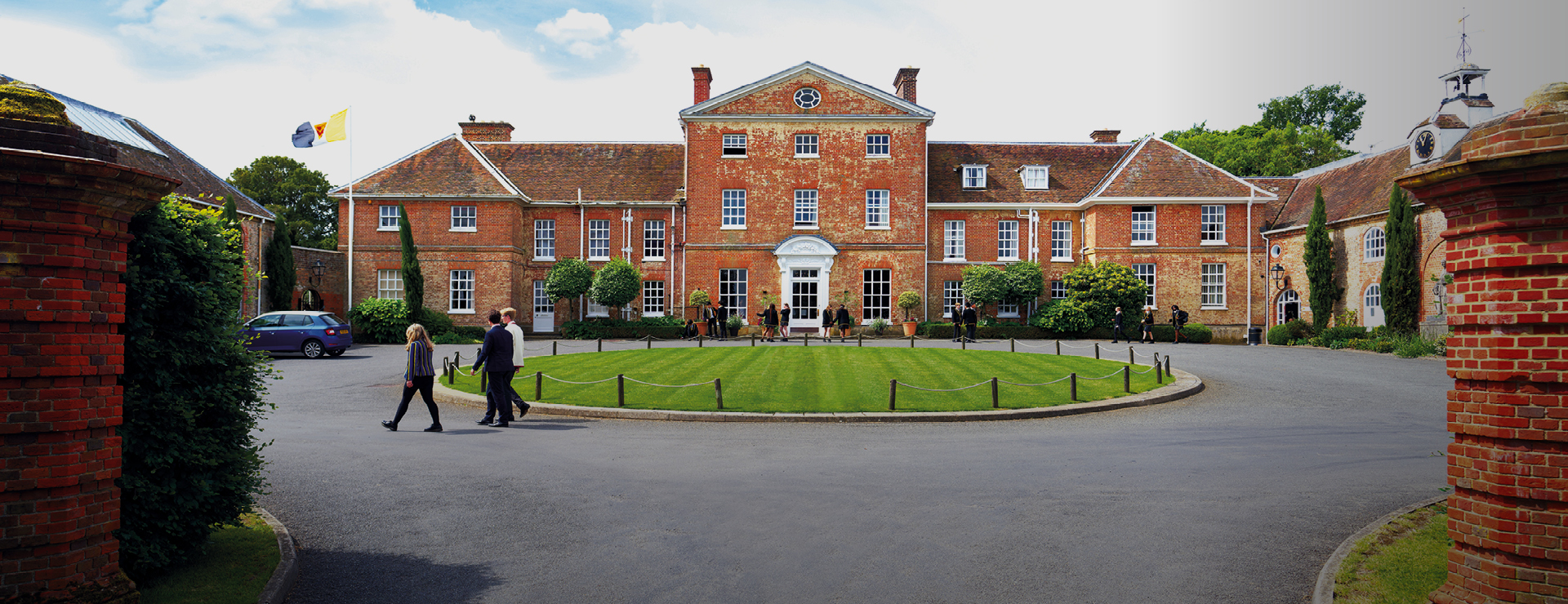The Lord of the Rings Talk by Dr Julian Murphy

‘Of the One Ring and the Nature of Good and Evil’
"I’ll start with two caveats. First, I have no background in literary criticism and secondly, I have not studied English Literature since leaving school. My one and only qualification is that I am a Tolkien nerd of the first order. I first read The Hobbit when I was nine, and then The Lord of the Rings when I was eleven and twice since as an adult. This is the whole point of the Windhover Society lectures, in that they’re quite informal and delivered by staff and, more importantly, students, on things that they really love and that excite them. This is the only qualification you need to give a Windhover lecture.
One of the interesting things about The Lord of the Rings is that it has been consistently voted in many polls over the last 30 years as the best-loved book of the last century. It is also probably the most popular of the important books of the last century. All of this is particularly surprising because The Lord of the Rings is a work of fantasy. Fantasy, along with horror, is often viewed as cheap fiction in comparison to other genres. My question is therefore why a fantasy work has become so important and so well-loved by different generations. I think the answer is that it has a great deal of depth in four different ways:
Linguistic Depth
The most important way in which this novel has depth is in its linguistic depth. The Lord of the Rings is built primarily around two languages, Quenya and Sindarin, which were entirely created by Tolkien. These are pretty much full languages. Quenya is loosely linked to Finnish and Sindarin to Welsh. This gives Tolkien’s work an air of reality because the ‘fantasy’ language glimpsed in it isn’t just gibberish or made-up language. These are real language systems.
Historical Depth
Tolkien began writing about Middle-Earth 40 years before he published The Lord of the Rings. He started his first stories about Middle-Earth while he was in the trenches in World War I. So there is a history, not a real history but a history nonetheless, behind these stories. This, again, gives the stories a depth that makes them feel more real.
Geographical Depth
Many people love Tolkien’s work for its geographical depth. A great fan is Ray Mears, who loves Tolkien’s work because of the beauty and realism of the depiction of nature. This geographical depth adds another layer of realism to the stories.
Moral Depth
The last way in which Tolkien’s work has depth - and the way that interests me the most - is its moral depth.
All these different ways in which Tolkien has given the work depth make it feel true. This is the difference between good fiction and bad fiction, good art and bad art. All art is a lie - Middle-Earth doesn’t exist, it’s made-up. But good art has a feeling of truth about it. As Picasso said, “Art is the lie that enables us to realise the truth.” There’s something about Tolkien’s work that meets this criteria of being good art.
Tolkien presents goodness through his main hero, Frodo. Frodo is an unheroic hero, a non-action hero. He never wins a fight and only draws his sword twice in the entire story. Nevertheless, he is a model of courage, wisdom, and strength. His courage lies in his humility, his wisdom in his mercy, and his strength in endurance. Frodo’s humility is shown when he volunteers to take the ring, saying, “I will take the ring, although I do not know the way.” His wisdom is shown in his mercy towards Gollum, whom he refuses to kill despite the danger. His strength lies in enduring the world rather than conquering it.
Frodo’s journey is marked by endurance and suffering, much like the soldiers in the trenches during World War I. Their courage consisted as much in enduring cold, hunger, discomfort, and exhaustion, as in ‘gong over the top.’ And most day-to-day human heroism is more about inexhaustible endurance than about rising to meet special moments that demand peculiar courage. In short, Frodo’s heroism is not about winning battles but enduring suffering. This makes him a Christian hero, embodying traditional heroic qualities of courage, wisdom, and strength, but in a transfigured way that only makes sense in the light of Christ on the cross.
Another interesting fact is that, unlike most quest stories where the goal is to find a treasure, The Lord of the Rings is about getting rid of a treasure - the One Ring. The ring represents desire, and the quest is about conquering desire. This theme is spiritually significant to Tolkien as a Catholic. In many ways, human life is a long process of losing things and, spiritually, Tolkien suggests that we must learn to let go rather than cling to our desires.
An interesting character in the story is Tom Bombadil, who is the only person entirely unaffected by the ring. He represents a kind of spiritual perfection through having achieved a state beyond desire and, therefore, a sort of second innocence. This is, of course, a spiritual fantasy, but a useful one nonetheless.
Another strong theme is the idea that saving something for others often means losing it for ourselves. Tolkien experienced this firsthand in World War I, coming home to a country he no longer recognised. This war-specific theme links to the universal human experience of ‘leaving the garden’ and the impossibility of a return ‘home’ to childhood.
Tolkien’s treatment of goodness also includes the themes of grace and mercy. Grace is the Christian concept of God’s action in the world, gifting us things when we can no longer help ourselves. At the climax of the story, Frodo fails to destroy the ring, overcome by its power. However, Gollum’s intervention, biting off Frodo’s finger and falling into the fire with the ring, ensures its destruction. This act of grace shows that despite Frodo’s failure, the combination of God’s grace and Frodo’s earlier mercy towards Gollum ultimately leads to the ring’s destruction.
Tolkien’s treatment of evil is profound and complex. One of the great questions about evil is whether it is a thing or a sort of nothingness, an absence. Tolkien explores this through the character of Sauron, who never appears directly in the story. Sauron is depicted as an all-seeing eye, yet he is never physically present. This suggests that evil, while it seems real, is also a kind of nothingness, an absence of good.
Tolkien also touches on the banality of evil, the idea that evil people are not extraordinary but rather ‘super ordinary’ and lacking something essential. This is seen in characters like Denethor, who, despite his bravery, falls into evil because his motives are so banal. He wants to preserve his own power and comfort, which renders his fight against Sauron hopeless. This echoes the Christian idea, as taught by Christ in the Sermon on the Mount, that it is not enough to do good; one must be good, and to be good always costs not less than everything.
Another recurring moral theme in Tolkien’s work is that good can see evil, but evil cannot see good. This is illustrated by the fact that Sauron, despite his power, cannot comprehend the selflessness of the characters opposing him. Goodness has the power to understand and reach out to evil, but evil is blind to goodness. This spiritual insight shows that, at least emotionally, good has an ultimate power over evil, despite the apparent dominance of suffering and malevolence in the world.
This theme is at the heart of the story during the Council of Elrond. When everyone is trying to decide what to do with the ring. Some suggest using it to defeat Sauron, while others propose hiding it or giving it to Tom Bombadil. Gandalf’s plan, however, is to destroy the ring by taking it into Mordor. He says, “Let folly be our cloak, a veil before the eyes of the enemy.” Sauron’s great weakness is that he cannot imagine anyone wanting to destroy the ring, as he only understands desire. This inability to comprehend goodness ultimately leads to Sauron’s downfall.
Finally, I am interested in the fact that Tolkien depicts evil as the habit of seeing through things rather than looking at them. This difficult idea seems to be explored through characters like Saruman and Gollum. Saruman, once a wise wizard, falls into evil by trying to understand and control everything in a purely causal, materialistic, way. Gollum, on the other hand, seeks hidden, occult, secrets but finds only emptiness. Both characters look through the ordinary surface world but lose the ability to see the world as it truly is, focusing only on causes rather than the inherent ‘surface’ value and reason of things.
Linked to this, Tolkien delves into the dual nature of humanity; the fact that we are both physical beings and conscious minds. Evil arises when we lose the ability to see ourselves in both ways, focusing solely on either the material or the spiritual and losing sight of the obvious (if awkward) fact that the human being is, inseparably, both a physical animal and a transcendent consciousness. Gollum represents someone who has allowed desire to debase him and has lost touch with his own free will and ‘spiritual’ nature. Sauron, conversely, represents the more terrible route of someone who has almost ‘nothinged’ himself out of existence through his own spiritual arrogance.
I’ll leave you with a final quote from the philosopher Roger Scruton about the idea of the transcendental and how we experience it. Scruton says, “The I, the self, is transcendental, which does not mean that it exists elsewhere, but that it exists in another way, just as music exists in another way from sound and God in another way from the world.” The Ring breaks apart this instinctive and unified vision of human experience, allowing its wearer to see through but not at the world. Evil and despair both arise from a gradual failure to see this transcendence that is right in front of us.
In conclusion, Tolkien’s work has a great deal of depth in its language, history, geography, and moral insight. This depth makes it feel true and gives it a lasting appeal. Tolkien’s presentation of goodness - through Frodo, with his humility, mercy, and endurance - and evil - through the at once all-seeing yet blind eye of Sauron - provides a moral depth that resonates with readers of all ages and cultures and makes The Lord of the Rings a timeless classic."
Dr Julian Murphy, Head at The Oratory School




